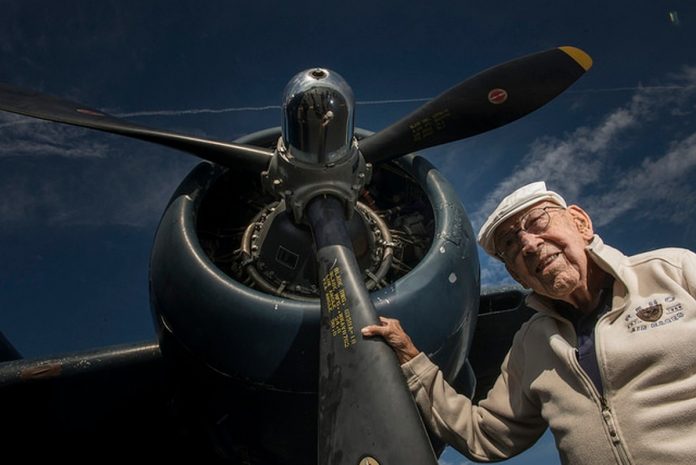Retired Lt. Col. Dick Cole, the last surviving member of the Doolittle Raiders who rallied the nation’s spirit during the darkest days of World War II, has passed away.
Tom Casey, president of the Doolittle Tokyo Raiders Association, confirmed to Air Force Times that Cole died Tuesday morning in San Antonio. His daughter, Cindy Cole Chal, and son, Richard Cole, were by his side, Casey said.
Cole will be buried at Arlington National Cemetery, Casey said. Memorial services are also being scheduled at Joint Base San Antonio-Randolph in Texas.
Cole, who was then-Lt. Col. Jimmy Doolittle’s co-pilot in the No. 1 bomber during the daring 1942 raid to strike Japan, was 103.
The Doolittle Raid was the United States’ first counterattack on the Japanese mainland after Pearl Harbor. Eighty U.S. Army Air Forces airmen in 16 modified B-25B Mitchell bombers launched from the aircraft carrier Hornet, about 650 nautical miles east of Japan, to strike Tokyo. While it only caused minor damage, the mission boosted morale on the U.S. homefront a little more than four months after Pearl Harbor, and sent a signal to the Japanese people not only that the U.S. was ready to fight back but also that it could strike the Japanese mainland.
Cole’s influence is still very apparent in today’s Air Force, and he remains a beloved figure among airmen. In 2016, he appeared on stage at the Air Force Association’s Air Space Cyber conference to announce that the service’s next stealth bomber, the B-21, would be named the Raider. Hurlburt Field in Florida in 2017 renamed the building housing the 319th Special Operations Squadron the Richard E. Cole Building.
And when he turned 103 last Sept. 7, Air Force Chief of Staff Gen. Dave Goldfein and his wife, Dawn, called him to wish him a happy birthday.
Cole was born and raised in Dayton, Ohio. In a 2016 interview with HistoryNet.com, Cole said he first became interested in flying as a kid, when he would ride his bicycle to the Army Air Corps test base McCook Field and watch the pilots fly. He said he enlisted in the Army Air Corps in November 1940 because “it was a good job,” especially in the midst of the Great Depression, and after finishing training went to the 17th Bombardment Group at Pendleton, Oregon.
He was transferred to Columbia, South Carolina, in early February 1942, where he saw a bulletin board notice seeking volunteers for a mission. His entire group put in their names.
Everyone wanted to go on that mission,” Cole said in a 2017 Air Force release.
Cole, who was then 26 years old, trained at Eglin Air Field in Florida for the secret raid.
“We were confined to base, in isolated barracks, and told not to talk about our training,” Cole told HistoryNet. “We knew it would be dangerous, but that’s all.”
The B-25 typically needed about 3,000 feet to take off, Cole said, but they trained to get airborne in 500 feet. And when future Navy Admiral Henry Miller started teaching them how to take off from a carrier, they guessed they were headed to the Pacific to take the fight to Japan.
Then-2nd. Lt. Cole became Doolittle’s co-pilot by chance, when the pilot he had been training with fell ill. Doolittle’s intended co-pilot also became unable to fly.
The B-25s were stripped of all excess equipment, including their bombsights and lower turrets, and loaded up with extra fuel tanks that doubled capacity to about 1,100 gallons. They left port from Alameda, California, on April 2, 1942, and two days later were told they would strike Tokyo.








